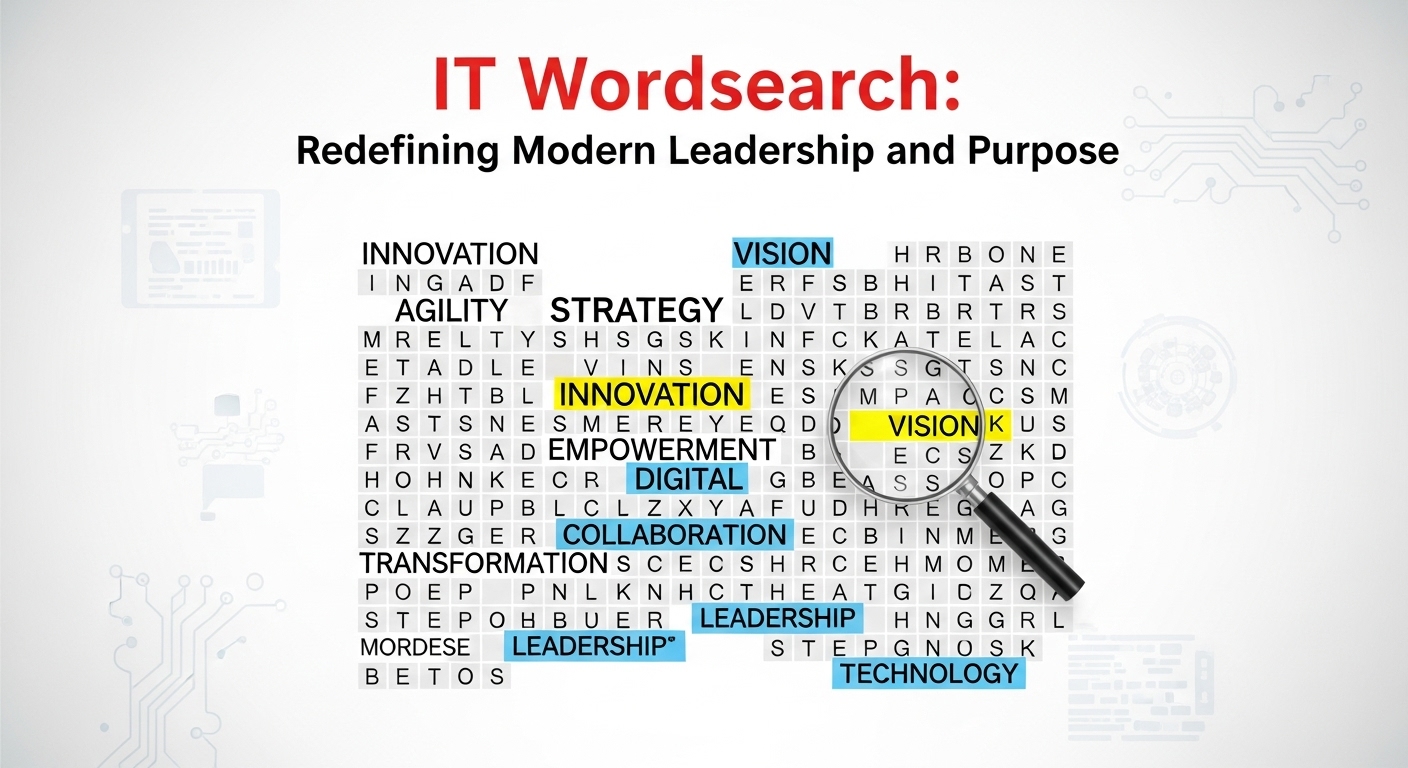BUSINESS
Community Favorites: The Best FiveM MLOs for RP

FiveM, the multiplayer modification framework for Grand Theft Auto V (GTA V), has become the backbone of online role-playing (RP) servers. One of the key components that brings these servers to life is MLOs, which are custom interior designs and map modifications. These environments are crucial to building immersive worlds where players can truly dive into their roles. Whether you’re a server owner, a player, or just curious about the best MLOs to enhance your RP experience, this blog covers the top community favorites in the FiveM world.
In this post, we’ll look at five of the most popular and well-regarded MLOs for RP in FiveM, discussing what makes each one stand out and how they contribute to the player experience.
What Are MLOs in FiveM?
Before diving into the top MLOs, let’s start by explaining what MLOs are and why they are so important for FiveM MLO.
Definition of MLOs
MLO stands for “Map Load Object.” These are custom interiors, map edits, or new buildings created by the FiveM community to enhance role-playing scenarios. They range from detailed interiors for police stations and hospitals to simple shops and residential homes, each adding new layers of depth and realism to the game. MLOs are designed with specific role-playing needs in mind, allowing players to fully immerse themselves in their roles within the server.
The Importance of MLOs for RP
MLOs make the difference between a bland role-playing experience and one where players can feel like they are truly living in a vibrant, interactive world. Without MLOs, players would be restricted to the base game’s limited interiors and environment, which can quickly become repetitive. Custom MLOs offer new locations and richer detail, enhancing the depth and variety of RP scenarios.
The Top FiveM MLOs for Role-Playing Servers
The following MLOs are widely praised by the FiveM community for their high-quality design, immersive features, and suitability for RP. These custom environments have become must-haves for many top-tier servers.
1. Gabz’s Mission Row Police Station
Why It’s a Community Favorite
Gabz’s Mission Row Police Station MLO is considered one of the best, if not the top, police station interiors available in FiveM. It’s favored by many servers due to its incredibly detailed interior and expansive layout, perfect for RP servers with law enforcement as a major focus.
Features and Details
- Immersive Interior: Gabz’s version includes not only the familiar police station look but also improved rooms such as interrogation rooms, locker rooms, and offices.
- Multiple Floors and Rooms: This MLO features multiple floors, each with distinct areas designed for different police functions.
- Prison Cells and Holding Areas: The cells and holding areas are designed to give the police role-playing experience authenticity, with plenty of room for interaction between players acting as cops and criminals.
Ideal For:
- Police RP
- Criminal Investigations
- Jailbreak Scenarios
Gabz’s Mission Row is so immersive and detailed that it often sets the benchmark for other police-related MLOs.
2. Pillbox Hill Medical Center
Why It’s a Community Favorite
Medical RP is a core element in most servers, and Pillbox Hill Medical Center is the go-to MLO for healthcare-focused interactions. From emergency treatments to routine check-ups, this MLO offers everything you need for hospital-based role-play.
Features and Details
- Modern Hospital Layout: The design is clean, modern, and realistic, offering players a true-to-life hospital setting.
- Functioning Ambulance Bays: For paramedic players, the ambulance bays add an extra layer of realism, allowing for the transport of injured players.
- Operating Rooms, Waiting Areas, and ICU: The center is equipped with all the essentials you’d expect from a hospital, including functioning surgery rooms, an ICU ward, and detailed waiting areas for patients.
Ideal For:
- Medical RP
- Emergency Scenarios
- Paramedic or Hospital Worker Roles
The Pillbox Hill Medical Center MLO brings life to medical role-playing, making it a must-have for servers where healthcare is a critical part of gameplay.
3. La Mesa Police Department by UncleJust
Why It’s a Community Favorite
La Mesa Police Department by UncleJust is a highly-detailed MLO favored by many FiveM RP servers for its unique layout and advanced functionality. It’s particularly popular with medium to large servers where law enforcement plays a significant role.
Features and Details
- Advanced Design: This MLO features a variety of rooms including offices, locker rooms, and interrogation rooms, each with high attention to detail.
- High Security Areas: The police station includes high-security holding cells and evidence rooms, which are great for law enforcement RP.
- Strategic Location: Situated in La Mesa, this MLO is ideal for servers looking to differentiate their police RP experience from the more commonly used Mission Row police station.
Ideal For:
- Law Enforcement RP
- Arrest and Detention Scenarios
- Custom Police Servers
This police department offers a unique setting that allows for a diverse range of police RP scenarios, making it a favorite for those looking to expand beyond standard police MLOs.
4. The Lost MC Clubhouse
Why It’s a Community Favorite
For those focused on biker gang RP, the Lost MC Clubhouse is a perfect fit. This MLO allows players to fully embrace the biker gang lifestyle with its gritty, realistic clubhouse setting.
Features and Details
- Grungy and Authentic Aesthetic: The interior features pool tables, a bar, and a meeting room, all contributing to the authentic biker gang vibe.
- Functional Garage and Hangout Areas: The garage is ideal for biker role-play, while the hangout areas are perfect for social interactions between gang members.
- Custom Artwork and Decorations: This MLO stands out due to the custom graffiti and artwork throughout, which adds to the immersion of the role-playing experience.
Ideal For:
- Gang RP
- Biker Clubs
- Illegal Activities
The Lost MC Clubhouse brings a gritty, raw feel to any server where gang-related RP is a focus, and its level of detail helps players get lost in their characters.
5. Pacific Standard Bank by YBN Milos
Why It’s a Community Favorite
The Pacific Standard Bank MLO is a fan-favorite for servers that feature heist or bank robbery RP. This MLO is highly interactive, allowing for a wide range of robbery scenarios and police interventions.
Features and Details
- Fully Detailed Bank Interior: This includes vaults, tellers, offices, and security rooms, all of which add depth to the bank robbery experience.
- Interactive Elements: Players can interact with vaults, locks, and other features, making it perfect for coordinated heists.
- Perfect for Heist Scenarios: The bank’s layout allows players to plan and execute detailed heists, while law enforcement can attempt to stop them with strategic responses.
Ideal For:
- Heist and Robbery RP
- Police Interventions
- Organized Crime Servers
The Pacific Standard Bank MLO is essential for servers that thrive on action-packed, criminal RP. Its interactive design ensures that both criminals and law enforcement players have an immersive, thrilling experience.
How to Choose the Right MLO for Your Server
Selecting the right FiveM MLO RP server is more than just picking a popular mod; it’s about finding what best fits your server’s theme and community.
Consider the Type of RP
Are you running a law enforcement-focused server? Or is your server more geared toward criminal organizations and gang warfare? Different MLOs will suit different styles of RP, so choosing ones that align with your community’s interests is key.
Server Population
Larger MLOs, like the Pacific Standard Bank or Gabz’s Mission Row, work better on servers with a larger population due to their complexity and size. For smaller servers, consider MLOs that offer detailed but smaller environments that won’t overwhelm a lower player count.
Map Compatibility
When selecting MLOs, ensure they’re compatible with your server’s map and don’t cause performance issues. Test the MLOs beforehand and check for any conflicts with other custom mods or scripts running on your server.
Final Thoughts: Elevating Your FiveM RP with MLOs
FiveM MLOs bring unparalleled immersion to RP servers, transforming the in-game world into a dynamic, ever-evolving environment. Whether your server focuses on law enforcement, healthcare, criminal enterprises, or any other theme, there’s an MLO out there that can enhance the experience. By incorporating these community favorites into your FiveM server, you can ensure your players will have more engaging, realistic, and memorable RP experiences.
BUSINESS
Common Legal Issues in Residential Real Estate and How to Address Them

Navigating residential real estate transactions can involve various legal challenges that homeowners and buyers should be aware of. Common issues include unclear property titles, zoning disputes, boundary disagreements, and contract misunderstandings. Addressing these matters proactively can prevent costly delays and protect all parties involved. Understanding the basics of real estate law helps individuals recognize potential pitfalls before they escalate into serious problems.
Engaging with professionals knowledgeable in real estate law can guide you in drafting contracts, resolving disputes, and ensuring compliance with local regulations. By seeking informed advice early, homeowners and buyers can reduce risk, streamline transactions, and safeguard their investments. Awareness and preparation are key to handling legal complexities effectively while maintaining confidence throughout the buying or selling process.
Title and Deed Fraud
Title fraud is a significant issue in which criminals transfer property ownership illegally by forging signatures or using other fraudulent means. This not only compromises ownership but may also leave you liable for debts or liens tied to your property. To protect your home, periodically monitor the status of your property title and consider using title lock services that can notify you of any unauthorized changes to your title. Title insurance, which most lenders require, also provides a crucial layer of protection for homeowners.
Undisclosed Property Defects
When selling property, sellers are legally obligated to disclose any known issues; however, some defects may remain hidden until after the sale has been completed. Commonly undisclosed issues include water damage, faulty wiring, and past pest infestations, which can result in significant costs for buyers. Buyers must conduct a thorough home inspection and scrutinize disclosure forms, maintaining clear communication with inspectors to document potential issues. If defects arise after the sale, buyers may have legal avenues for compensation or to rescind the contract.
Breach of Contract
Residential real estate deals are governed by contracts detailing every aspect of the transaction, from price and contingencies to required repairs and closing dates. Breaches can occur if any party fails to meet their obligations, for instance, by not repairing a leaky roof as promised or missing crucial deadlines. Preventing breaches begins with clear and precise language in contracts and diligent communication among all parties. Understanding residential real estate law is essential, as it provides the framework for enforcing agreements and resolving disputes. In the event of a potential contract violation, consulting with a real estate attorney can help explore remedies such as mediation, renegotiation, or pursuing damages through legal channels.
Financing and Mortgage Issues
Financing problems or misconceptions about mortgages, such as loan denials after an offer, misunderstandings about interest rates, and mistakes in documentation, can make a real estate transaction difficult. Before closing, buyers should maintain good credit, avoid making significant financial changes, and thoroughly understand their loan terms and conditions. To mitigate risks and prevent unforeseen issues, it is crucial to maintain open lines of communication with lenders, including documenting all conversations.
Zoning and Land Use Restrictions
Zoning laws regulate the use of properties, including structures, businesses, and fences. Ignoring local ordinances can lead to legal issues or the removal of modifications. Check the regulations on your city or county website and consult with planning officials before making changes to ensure compliance and avoid costly errors.
Homeowners Association (HOA) Disputes
Neighborhoods governed by HOAs come with additional rules and responsibilities. Disputes over landscaping, parking, noise, or architectural changes are common and can lead to fines or legal conflicts if not handled carefully. Before committing to a property in a managed community, scrutinize the HOA’s covenants, conditions, and restrictions (CC&Rs), and attend community meetings if possible. If you find yourself facing a dispute, approach your HOA board promptly and maintain a documented record of correspondence to facilitate quick and amicable resolutions.
Boundary and Survey Disputes
Accurate boundary identification is crucial for maintaining peaceful neighbor relationships and facilitating future transactions. Disputes may arise from misinterpreted property lines, encroachments, or unclear lot descriptions. Buyers should always order a fresh professional survey before closing and review all records for discrepancies. Resolving boundary disagreements amicably is ideal, but legal recourse may be necessary if talks fail. County assessor offices and historical deed records often provide valuable documentation during such disputes.
Conclusion
By proactively identifying and addressing these common legal issues in residential real estate, you reduce the likelihood of disputes and financial setbacks. Relying on professionals, including attorneys, inspectors, and local government officials, is crucial to navigating the process safely. Make informed decisions, keep diligent records, and stay current with your obligations to ensure a successful and secure real estate experience.
BUSINESS
The Power of Peace of Mind: Why Insurance Is an Investment, Not an Expense

Understanding Insurance as an Investment
Understanding insurance as an investment means recognizing that certain policies serve a dual purpose: offering financial protection and building long-term value. Unlike savings accounts, these policies create a safety net and accumulate cash value, like life insurance growing through interest or dividends, providing coverage and wealth buildup. Viewing insurance this way helps individuals choose policies aligned with their financial goals and risk tolerance. Even standard policies, such as auto insurance, contribute to financial planning by covering damages and liabilities, preventing major expenses that could affect budgets or investments. Recognizing insurance’s dual role as protection and potential investment allows for better financial stability and peace of mind.
Major Types of Insurance and Their Benefits
Each insurance type serves a specific purpose. Health insurance covers unexpected illnesses, providing lifesaving care when needed. Property and homeowner’s insurance help rebuild after fires or storms. Auto coverage protects your vehicle and passengers and fulfills legal requirements, shielding parties from losses. Policies can be customized with add-ons like identity theft or bundling car, house, or business liabilities to suit your needs. Home insurance is essential for homeowners, protecting against weather damage, theft, and liability, so you can rest easy. The right coverage considers your assets, lifestyle, and goals, building a safety net. When choosing insurance, look beyond premiums to the long-term impact of coverage.
The Economic Impact of Insurance on Communities
Insurance isn’t just about individual peace of mind; it fortifies entire communities. When people and businesses insure their property, health, and liabilities, they’re more likely to innovate, expand, and support local economies without the threat of catastrophic loss holding them back. In times of crisis, insurance payouts for rebuilding and recovery help stabilize neighborhoods and reduce the strain on public resources.
Economists have observed for a long time that insurance significantly supports entrepreneurship and investment in new ventures. Industries with good coverage tend to withstand economic downturns better and recover more quickly from unexpected shocks. Without the reassurance provided by insurance, growth and innovation would slow down considerably, and the potential risks might prevent significant advancements.
Integrating Insurance into Long-Term Financial Planning
Insurance should be a pillar of any sound financial plan. Start by assessing which risks could cause serious setbacks and match coverage types to those needs. For example, young families often prioritize life insurance for security, while property owners focus on home protection. Consistently reviewing policies ensures your protection evolves along with life changes, from family milestones to new business ventures.
Smart policyholders treat premiums as contributions toward future security—much like retirement savings or investments in education. This proactive mindset isn’t about compliance or mere obligation; it’s about wisely positioning yourself and your loved ones to weather whatever comes, while supporting the stability and prosperity of your broader community.
Conclusion
In today’s unpredictable world, the value of insurance extends far beyond a monthly bill. It is a critical investment, weaving together individual peace of mind with the collective strength of families, homeowners, and business owners. By embracing insurance as a strategic tool rather than an expense, you empower yourself to pursue your dreams and build a future fortified against life’s uncertainties.
Building your protection strategy now lays the groundwork for confidence, stability, and security—qualities that enrich not only your own life but also the broader community and economy. Make insurance a purposeful component of your financial plan and experience the freedom that comes from true peace of mind.
BUSINESS
IT Wordsearch: Redefining Modern Leadership and Purpose

In today’s rapidly evolving world, leadership is no longer defined solely by financial success or corporate expansion. The most influential leaders are those who integrate business excellence with social responsibility, building organizations that thrive while uplifting communities. One such emerging perspective in this landscape is IT wordsearch—a concept that symbolizes the search for meaning, alignment, and innovation in modern leadership.
This article explores how IT wordsearch represents more than a puzzle-like curiosity. It reflects a deeper leadership journey—one where purpose and performance align, where success is measured not only in profits but also in people, culture, and long-term impact.
What is IT Wordsearch?
At first glance, it wordsearch may sound like a simple activity: finding hidden words within a grid. Yet when applied to leadership and business, the phrase takes on a symbolic meaning. It suggests a process of discovery, alignment, and focus. Just as players search for hidden words, leaders must search for solutions, values, and strategies hidden within the complexity of today’s global challenges.
The idea resonates with professionals who believe that economic growth and positive social change are not mutually exclusive but deeply interconnected. Much like solving a wordsearch, success lies in recognizing patterns, connecting dots, and uncovering possibilities others may overlook.
A Leadership Philosophy Rooted in Discovery
At the heart of the it wordsearch philosophy is the belief that leadership is a continuous search for purpose. This approach emphasizes three core values:
- Empathy in leadership: Understanding the human side of business, from employees to customers.
- Sustainability: Ensuring long-term growth by balancing profitability with environmental and social responsibility.
- Collaboration: Building partnerships that amplify both business outcomes and community well-being.
This framework reflects a growing awareness that modern organizations do not exist in isolation. They are part of larger ecosystems where every decision has ripple effects. Leaders who embrace the it wordsearch mindset don’t just chase immediate wins—they uncover deeper value that sustains both business and society.
Bridging Business Growth with Social Impact
What makes the it wordsearch approach so powerful is its ability to link corporate success with community impact. Much like finding words hidden within a grid, leaders must look beyond the obvious to discover opportunities for shared growth.
Examples of this approach include:
- Workplace Culture: Designing inclusive, supportive environments that attract and retain diverse talent.
- Community Investment: Reinvesting resources into education, local initiatives, and social programs before they become urgent needs.
- Innovation for Good: Using technology to solve pressing challenges, from environmental sustainability to equitable access to services.
When these values are embedded into strategy, businesses create a virtuous cycle: strong companies nurture stronger communities, which in turn sustain future growth.
Influence in the Digital Age
The digital landscape has amplified the importance of acting with foresight. Just as a wordsearch reveals hidden connections, the digital world reveals opportunities for influence and innovation. Leaders today use platforms not only for visibility but also to inspire movements and conversations around responsible practices.
With it wordsearch as a guiding principle, leaders leverage digital tools to:
- Reach broad audiences with authentic messages.
- Engage younger generations who value transparency and inclusion.
- Inspire peers to adopt purpose-driven strategies.
In this sense, digital influence is no longer about self-promotion—it is about amplifying messages that shape industries and communities alike.
A Model for the Next Generation
The rise of it wordsearch as a metaphor for leadership aligns closely with the values of Millennials and Gen Z. Younger professionals increasingly seek role models who:
- Live authentically, aligning values with action.
- Promote diversity and equity, not as an afterthought but as a foundation.
- Think globally, addressing interconnected challenges such as climate change, inequality, and digital ethics.
These expectations highlight why it wordsearch resonates—it symbolizes the search for alignment in an often disjointed world. By embodying these principles, leaders position themselves not just as executives but as mentors and trailblazers.
Challenges in the Search
Like solving a difficult puzzle, applying the it wordsearch philosophy is not without challenges. Leaders face:
- Balancing short-term pressures with long-term commitments to purpose.
- Convincing traditional stakeholders of the measurable value of social responsibility.
- Navigating uncertainty in rapidly changing markets and technologies.
However, these challenges are also opportunities. Much like hidden words, solutions often lie just beneath the surface. Leaders who embrace curiosity and adaptability can turn obstacles into breakthroughs.
Why the Wordsearch Metaphor Matters
The metaphor of it wordsearch matters because it reflects the complexity of modern leadership. Success isn’t about finding a single answer; it’s about uncovering many interconnected solutions. A leader who can anticipate challenges, spot hidden opportunities, and align strategy with purpose is far better equipped to guide organizations through uncertainty.
This proactive mindset is essential in a world where reactive leadership often falls short. Waiting until challenges dominate headlines is too late. By searching for solutions early—before they are visible to all—leaders create lasting resilience.
Looking Ahead
As leadership continues to evolve, it wordsearch represents more than a clever metaphor. It is a call to action: to search for meaning, embrace complexity, and discover opportunities before they become urgent.
In a world where consumers, employees, and investors increasingly demand accountability, the leaders who succeed will be those who treat every challenge like a wordsearch puzzle—hidden with possibilities waiting to be uncovered.
The future belongs to leaders who see beyond profits, who connect performance with purpose, and who embrace the ongoing search for what truly matters. In the end, the most powerful leaders are those who uncover meaning not after the fact, but during the process—just as one finds words hidden in a puzzle grid.
-

 HEALTH2 years ago
HEALTH2 years agoIntegrating Semaglutide into Your Weight Loss Plan: A Practical Guide
-

 HOME IMPROVEMENT2 years ago
HOME IMPROVEMENT2 years agoHow to Choose the Perfect Neutral Area Rug for Every Room
-

 LAW2 years ago
LAW2 years agoTeenage Drivers and Car Accidents in California: Risks and Parental Liability
-

 CONSTRUCTION2 years ago
CONSTRUCTION2 years agoConstruction Site Safety Regulations in New York and Your Rights as a Worker
-

 LAW2 years ago
LAW2 years agoPost-Divorce Considerations in California: Modifications and Long-Term Planning
-

 HOME2 years ago
HOME2 years agoSandra Orlow: The Teen Model Who Captivated the Internet
-

 FASHION2 years ago
FASHION2 years ago7 Celebrity-Inspired Elegant Summer Dresses For 2024
-

 FINANCE2 years ago
FINANCE2 years agoDigital Asset Management in Florida Estate Planning
